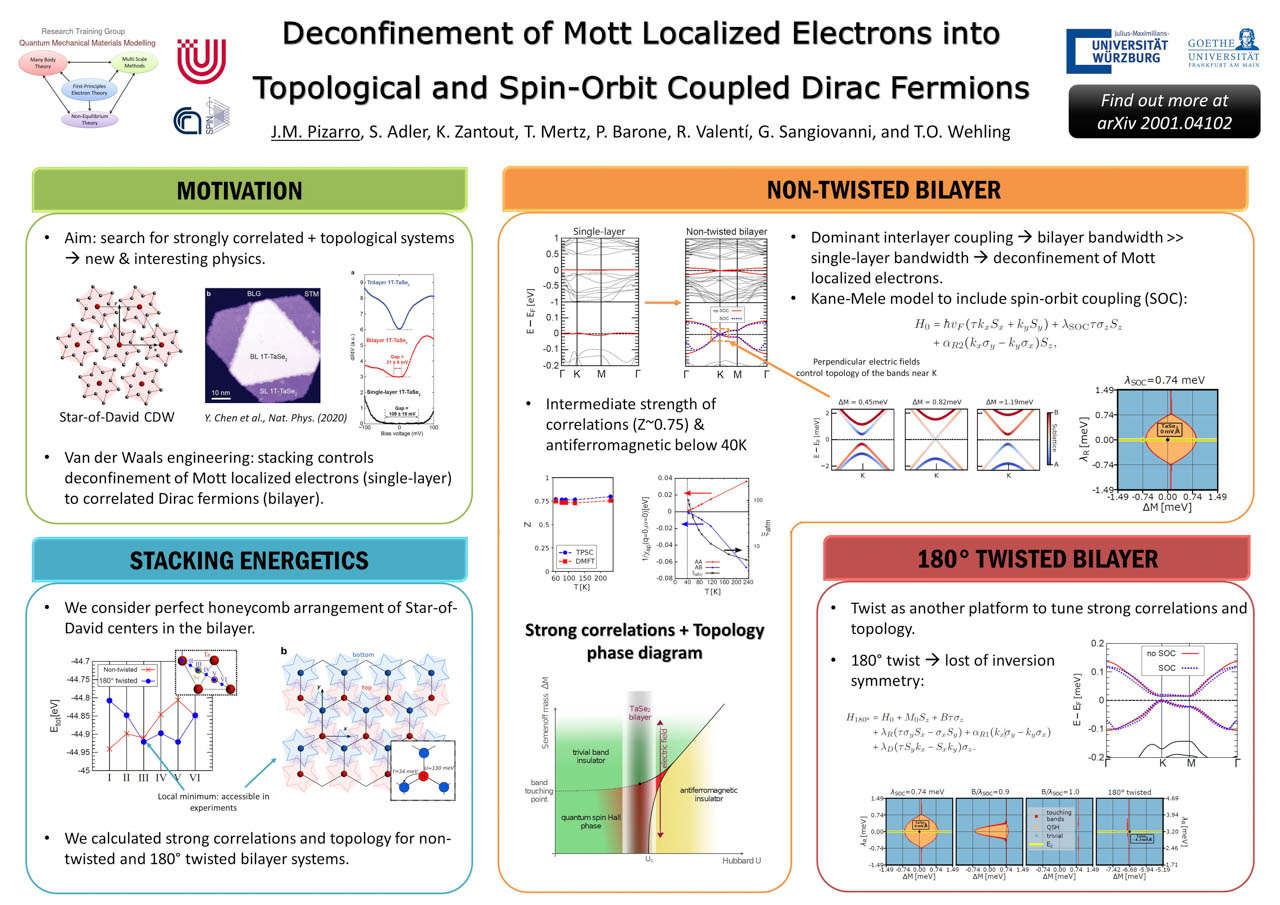Deconfinement of Mott Localized Electrons into Topological and Spin-Orbit Coupled Dirac Fermions
ABSTRACT
The interplay of electronic correlations, spin-orbit coupling and topology holds promise for the realization of exotic states of quantum matter. Models of strongly interacting electrons on honeycomb lattices have revealed rich phase diagrams featuring unconventional quantum states including chiral superconductivity and correlated quantum spin Hall insulators intertwining with complex magnetic order. Material realizations of these electronic states are however scarce or inexistent. In this work, we propose and show that stacking 1T-TaSe2 into bilayers can deconfine electrons from a deep Mott insulating state in the monolayer to a system of correlated Dirac fermions subject to sizable spin-orbit coupling in the bilayer. 1T-TaSe2 develops a Star-of-David charge density wave pattern in each layer. When the Star-of-David centers belonging to two adyacent layers are stacked in a honeycomb pattern, the system realizes a generalized Kane-Mele-Hubbard model in a regime where Dirac semimetallic states are subject to significant Mott-Hubbard interactions and spin-orbit coupling. At charge neutrality, the system is close to a quantum phase transition between a quantum spin Hall and an antiferromagnetic insulator. We identify a perpendicular electric field and the twisting angle as two knobs to control topology and spin-orbit coupling in the system. Their combination can drive it across hitherto unexplored grounds of correlated electron physics including a quantum tricritical point and an exotic first-order topological phase transition.
PRESENTER
Jose Pizarro
University of Bremen
Click here to add your own text


Leave a Reply
Want to join the discussion?Feel free to contribute!